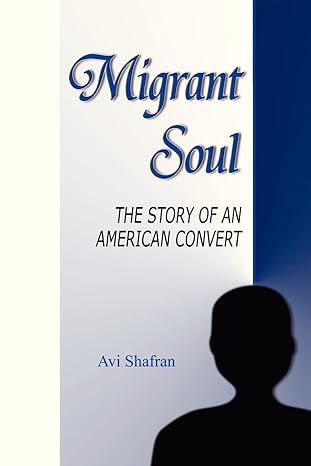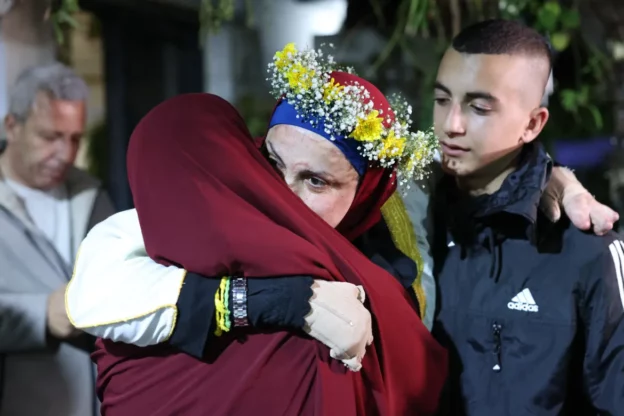My most recent Ami Magazine column surveys some challenges being faced by “The Squad” in Congress, and can be read here.


My most recent Ami Magazine column surveys some challenges being faced by “The Squad” in Congress, and can be read here.

Black and white is for cookies. Thinking people judge ideas and people by actually evaluating them, not by making thoughtless generalizations.
To read more of what I mean, please click here.

The aron habris, the ark of the covenant that held the luchos, the tablets of the law, consisted of three nested boxes, the middle one of wood, the outer and inner ones of zahav tahor – “pure gold.” Its kapores, or cover, was made entirely of “pure gold.”
Not so the poles that are placed in rings on the sides of the aron – and that are to remain there permanently. Like the aron itself, they are wooden but covered with gold. But only “gold,” not “pure gold” like the aron’s inner and outer boxes.
In his sefer Nachalas Tzvi, Rav Meshullam Gross notes that difference and sees in it the fact that those whose lives are dedicated to Torah-study, symbolized by the aron, must be pure-hearted and not motivated by ulterior motives. Those who support them, however, who are symbolized by the poles with which the aron was carried, may condition their support on other things.
Ulterior motives do not cancel the merit of Torah-support or other meritorious giving. As the Talmud (Pesachim 8a) teaches: “One who says: I am contributing this coin to charity so that my son will live… is a completely righteous person.”
A common ulterior motive in philanthropy is honor. That is why donors’ names on plaques in shuls, Jewish outreach centers and yeshivos, or on the edifices themselves are perfectly proper.
In fact, such displays can constitute great merits in their own rights.
One of the most generous donors to Torah causes was Joe Tanenbaum, whose name, along with his wife Faye’s, graces wonderful institutions not only in his adopted city Toronto but across the globe. As a child, he hadn’t received a thorough Jewish education and he wanted others to have every opportunity to Jewishly educate themselves.
He was, though, by all accounts, a most modest man. A story that made the rounds many years ago is that he was once asked why he wanted his and his wife’s names to be prominent on the facades of the countless Torah-promoting buildings.
His reply was that, in the event that one of his future descendents should for some reason not receive a Jewish education or fall away from the Jewish path, he hopefully imagined the young person seeing the name Tanenbaum on an edifice and, carrying the same surname or knowing it was in his or her genealogy, becoming sufficiently intrigued to enter its doors.
© 2024 Rabbi Avi Shafran

An essay I wrote about the issue of age in the presidential contest was recently published at Religion News Service and can be read here.

Georgia Congressman Hank Johnson believes that capitulating to a group whose motto is ““Death to the US, death to Israel, curse the Jews, and victory for Islam” is the way to go.
To read about his idea, and my thoughts about it, please click here.

One of our granddaughters told me she is reading my book “Migrant Soul”, which was published back in 1992. It spurred me to read it myself, for the first time in more than two decades. I liked it! It’s out of its original publisher’s print but, if you’re interested, it can be ordered print on demand or in a Kindle version here.

Have you heard of the Ruba Award? Probably not. It’s a recent prize that I recently announced, and it’s available only to a (blessedly) small subset of humanity.
But you can read about it here.

“A disfigured woman whose case has become well known is among the Palestinians released” was the headline of a New York Times story about criminals in Israeli jails being traded for hostages held by Hamas.
Want to know more about the woman referred to in the headline, a new definition of chutzpah and something you might not know about the Hamas leader in Gaza? Well, just click here.

Sometimes an idea can only be possible after a certain point in history. One example might have to do with the imagery of Yaakov’s dream at the start of the parsha.
The message delivered to our forefather during that prophecy was “To you shall I give [Cna’an], and to your children.” And: “All the families of the earth will be blessed through you, and through your children.” Yaakov, in his dream, is being reassured that, unlike Avraham and Yitzchak, all of his children will comprise the Jewish nation.
Even the stone on which he rested his head that night and later made into a monument to the revelation he received carries that message. According to the Midrash, it had originally been many stones, which fused into one, a metaphor for the family unity he would achieve. Rashi even comments elsewhere (Beraishis, 49:24) that the word for “stone” (even) itself is a contraction of the words av and ben, “father” and “son.”
But then there is the sulam, usually translated “ladder,” which plays the central role in Yaakov’s dream imagery.
The word occurs only this one time in the Torah, and its etymology is unclear. But an Arabic cognate of the word refers to steps ascending a mountain. The easiest way to ascend a mountain is a spiral path. That fact, and the possibly related Aramaic word “mesalsel” – to twist into curls – might lead one to imagine Yaakov’s ladder as something akin to a spiral staircase.
Which speculation leads to a fascinating thought that couldn’t have been thought until the 1960s.
Considering that the assurance given Yaakov in his dream was essentially a “genetic” one – that all his progeny would be part of Klal Yisrael — might the sulam have been not a simple ladder but rather something reminiscent of, and symbolizing, the essential structure of the molecule that carries genetic information – a double helix?
© 2023 Rabbi Avi Shafran

You’re forgiven for not knowing that, in addition to my Agudah work and writing for various publications, I also work as a secret undercover agent for an unnamed country. After all, it’s a secret.
Until now, that is. To read about a recent escapade of mine and what it yielded, please click here.